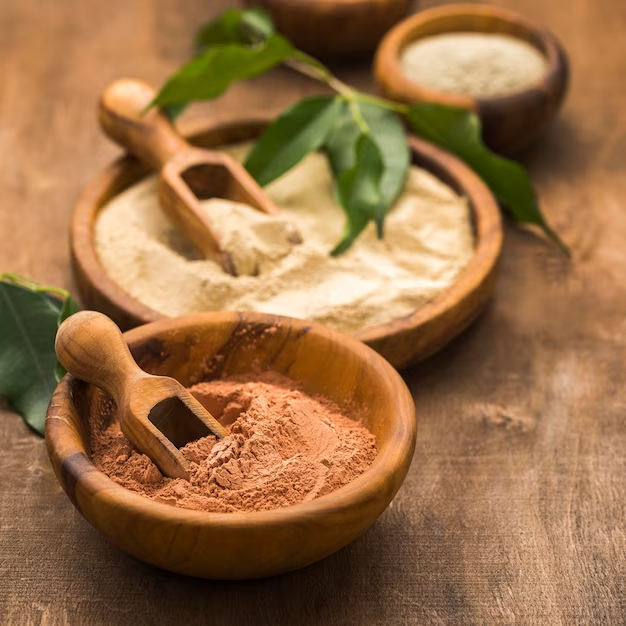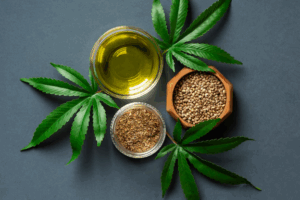Trainwreck Kratom: What It Is & Why People Love It
If you’ve explored the world of kratom, you’ve probably come across Trainwreck Kratom — a name that’s bold, a little mysterious, and often mentioned by
Due to holiday carrier volume, some orders may be delayed.

Kava and kratom, both natural compounds with rich cultural roots, have gained popularity as individuals. Many people are investigating these possibilities to meet their needs. Moreover, Kratom and Kava are available in a variety of forms.
In this comprehensive comparison, we’ll delve into the differences between Kava vs. Kratom, shedding light on their origins, traditional uses, and cultural significance. Understanding the distinctions between these two plants, from their growth and preparation to the historical contexts in which they are used, can help individuals make informed decisions when considering these natural substances for various purposes. Let’s explore the captivating world of Kava and Kratom.
Kava is a plant that looks like a tree but isn’t one. You can buy pre-packaged kava tea bags or kava powder from a store to prepare your own. Kava is also available in pill form, which can be bought in the supplement section of most supermarkets.
Kava is derived from the roots of the Kava plant, which is native to Fiji and Indonesia. This plant belongs to the pepper family. People in these places make a variety of drinks from the plant’s roots. Additionally, it is blended with either water or coconut milk at select restaurants and Kava bars to prepare beverages for social or recreational purposes. Furthermore, Kava has been used in religious rites.
The kava craze is more than just a drink; it extends beyond that. What many people don’t realize is that kava is derived from a plant called Piper methysticum, which translates to “intoxicating pepper.” It gets its name from the Tongan word ‘awa,’ which means “bitter.”
The Polynesian and Pacific region’s kava culture is profoundly ingrained in its traditional uses, which include not just its calming effects but also its important part in ceremonies. People in these locations manufacture kava using simple procedures.
Kava culture in the Polynesian and Pacific region has strong origins in its original applications for calming effects and ceremonial importance. There are simple ways to prepare Kava. The first method involves crushing it with a mortar and pestle fashioned from the grinder’s hand with coral as the grinding surface. This approach has a lengthy history of use in the Pacific region.
You can also try alternative methods, such as adding a little moisture to make crushing the root and bark easier. Keep in mind that the bark usually has enough moisture on its own, so only a tiny amount of water is required to soften it.
The substance that seeps from the bark is called kavalactone. It’s usually combined with other components, most notably buttermilk and carbohydrates. Keep in mind that it is not intended to be ingested on its own; it is more usually utilized as a component than as a standalone product.
Kratom and kava have certain similarities, but it’s crucial to first grasp what kratom is. Kratom is a unique plant from kava, coming from a different location in the Eastern hemisphere. It’s an evergreen tree, known as Mitragyna Speciosa that grows in Southeastern Asia, mainly in Thailand and Indonesia, as well as the neighboring areas.
Kratom’s diverse strains, cultivation techniques, and centuries-old use have created a tapestry of traditions and rituals, making it a subject worth exploring. Beyond its potential effects, delving into the intriguing aspects of Kratom unveils a world of botanical diversity, cultural significance, and the ongoing quest to understand this enigmatic plant.
Navigating the complex landscape of Kratom’s legality is crucial to ensure compliance with local laws and regulations. Regulations can vary significantly, so individuals need to research and stay updated on the legal status of Kratom in their specific region.
Read more: Is Kratom Legal in Texas? All Important Updates You Need to Know
While kava with kratom share many similarities, it is important to recognize that they also have substantial differences. Both are derived from plants and include chemicals that have good formulations. What distinguishes them?
Kava is legal from coast to coast in the United States, but kratom is prohibited in five states: Arkansas, Alabama, Wisconsin, Indiana, and Vermont. Kratom is facing an uphill battle in the United States, where there is a campaign for a ban. It has been illegal in Thailand since the 1940s but now decriminalized here a couple of years ago. Kratom is legal in Tennessee and Colorado states.
Kratom is a kaleidoscope of natural diversity that unveils the wonders of its unique strains. Also, Kratom blends harmonize premium strains, offering an exceptional ‘best of both worlds’ Kratom encounter. Kava is a soothing herb that has been utilized in Polynesian societies for hundreds of years as a ceremonial beverage to facilitate social interactions.
If you’re looking for a safe, natural alternative to enhance well-being, kava kratom could be an excellent option. Although their chemical compositions differ, most people deal with them well. You can purchase a wide variety of high-quality Kratom products from Club13 Herbals. Our extensive selection, along with informative resources, can assist you in making an informed choice that aligns with your well-being and lifestyle.
If you’ve explored the world of kratom, you’ve probably come across Trainwreck Kratom — a name that’s bold, a little mysterious, and often mentioned by

What Is Kratom Seltzer? Everything You Need to Know Move over, hard seltzers — a new kind of botanical brew is making waves. Kratom seltzer

Top 7 Kratom Capsules That Work (And Where to Get Them) With the growing number of kratom brands entering the market, finding quality capsules you
Why Red Maeng Da Kratom Is the #1 Choice for Daily Buyers In the world of kratom, Red Maeng Da is one of the most

Plants like Kratom and CBD have received significant attention in recent years for their potential to improve overall wellness. As these two substances continue to